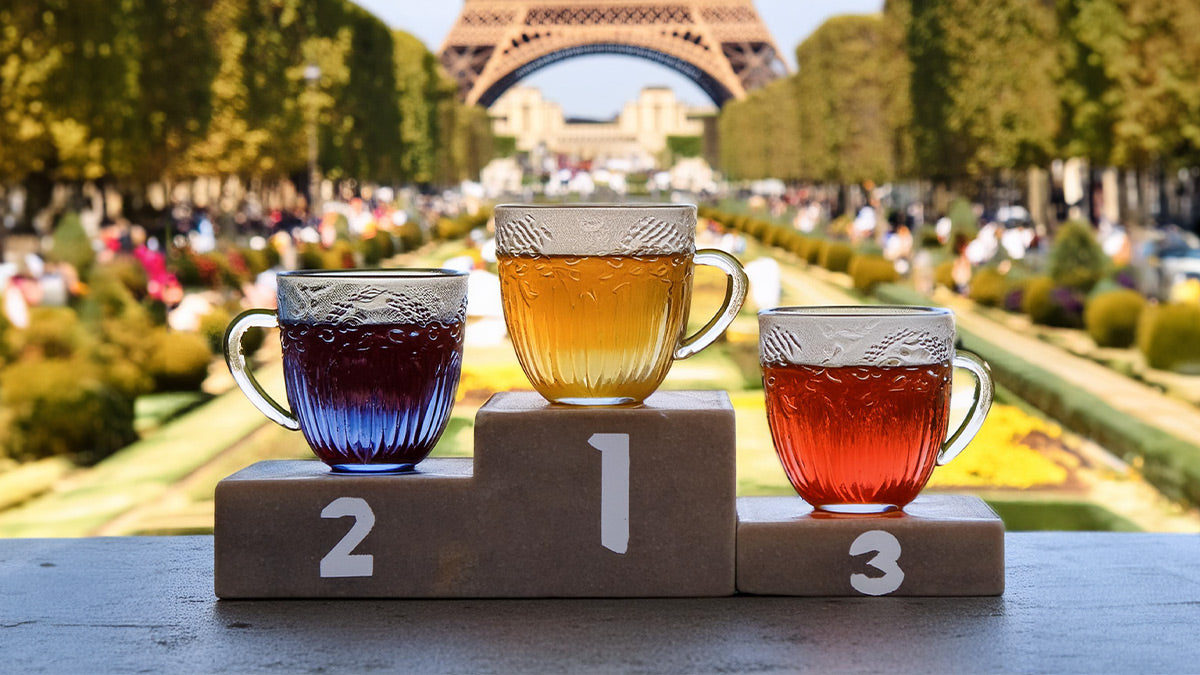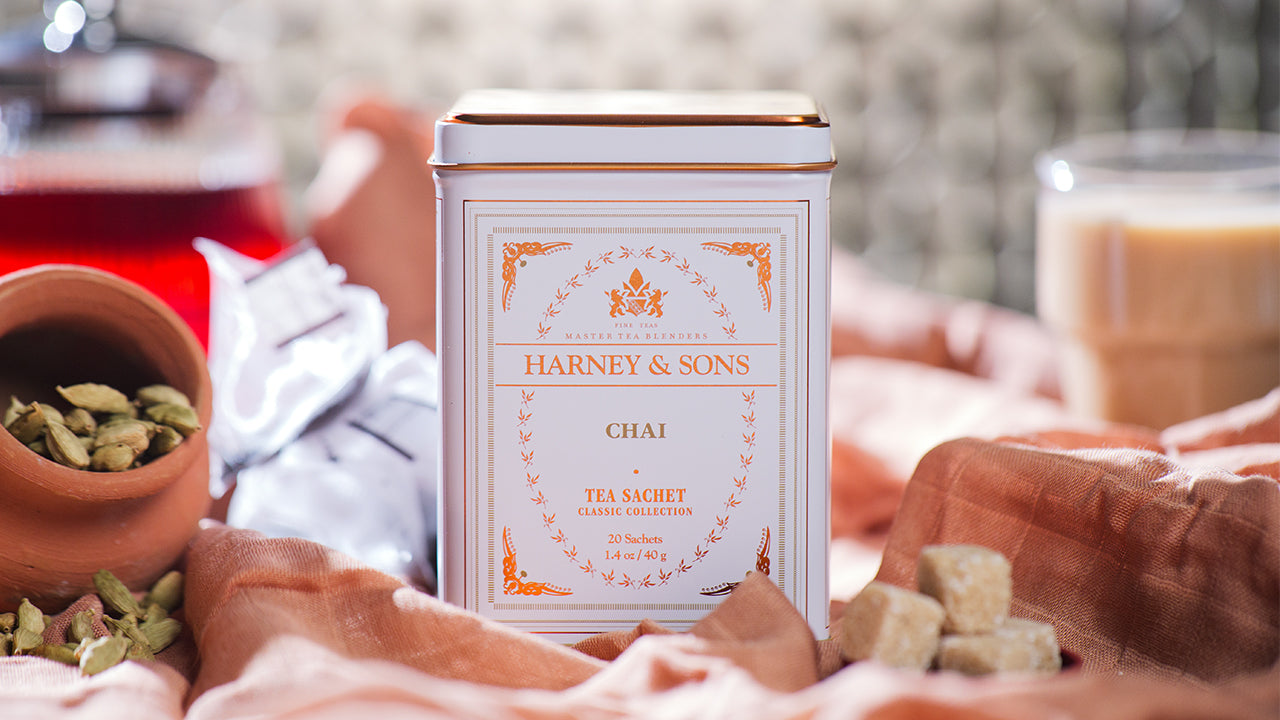Hello, and welcome back to my latest Mike Harney Spills the Tea blog. For this installment, I thought I’d elaborate on something you may have noticed while shopping for teas on our Harney & Sons website: almost all our teas have a section called Mike’s Tea Ratings. Since I am Mike (last time I checked), I wanted to give you a closer look at how I and my team assign those ratings.
It all started when I was developing my book, now almost 20 years ago. I wanted to rate teas, so I fell back on my many years of experience in the wine business and looked at what worked there. I thought this trio of Briskness, Body, and Aroma – that was in many wine ratings – could also be applied to help customers decide on a tea. Of course, one must consider the many parts of a tea’s description: the look, the aroma, and the flavor. Sometimes, the tea’s history or derivation adds important context, but in general, we’re mainly looking at these three qualities.
So that’s how these three categories came about … but what do they mean?
- Briskness: This is a measure of astringency. How much does it make you pucker, or can you feel your tongue tingle?
- Body: This is a wine-tasting term concerning the weight of a liquid. Is the tea thick in your mouth like heavy cream or light like skim milk?
- Aroma: How strong is the smell, and what does the aroma remind you of? The nose is a better instrument than the tongue.
These elements make each tea work and become distinctive. Some customers like to add milk and sugar, so a brisk tea is needed to balance out the fats in the milk. Drinking tea all by its lonesome? Then, briskness should be lower. That is how the Chinese and Japanese like to drink their tea. Does the tea have structure (that means “body”)? Some people want structure in their tea, and some do not. Some of our customers like a tea that has strong flavors such as jasmine or hot cinnamon. Others prefer to have the subtle aromas that plants and people can create.

While I taste most of the teas, fortunately, I am not alone in making these evaluations. Purchasing Director, Elvira Cardenas, and her team taste each and every one of our teas. We taste when a vendor sends us a small sample. Later, we get a “purchase sample,” and when it shows up here in our Millerton factory, we taste the “arrival sample.” If we blend it with other teas or flavors, we taste it again. And, when it is packaged up for you, we taste it then. It’s our great privilege to taste teas many, many times, just so we are convinced it will bring a smile to your face!
While tasting tea all day is a lovely job to have, it’s also serious work. It has taken me years to develop my palate. Elvira picked it up a bit quicker (to be expected). To determine these qualities for our ratings, we look at each tea and what the leaves look like. We smell it dry, then brew it. We look at the wet leaves, smell them, and look at the brew. Oftentimes, these point us in the direction of where we think the three qualities will be in the ratings. However, the proof is in the tasting of the tea. We do taste it like wine tasters — we gurgle it a bit, converting that lovely liquid into aromas that our nose can distinguish. As I said before, the nose is a more reliable detective than the taste buds.

Do some types of teas have more of one quality? The answer is yes.
- When it comes to briskness, Indian teas are more brisk than Chinese. Smaller leaves are more brisk than larger ones.
- When it comes to body, early season teas have more amino acids that create body. And CTC teas (CTC stands for “crush, tear, curl” or “cut, tear, curl”) have more dissolved solids that create body, otherwise known as a thicker tea.
- As for strong aroma, our best-selling Hot Cinnamon Spice and Jasmine teas are two examples of strongly flavored teas, although they are made differently. Hot Cinnamon Spice gets its strong flavors in our blending room, and Jasmine’s are developed over several days of mixing dry tea leaves with fresh, fragrant jasmine flowers.
Finally, customers sometimes wonder if a lower score or a higher score (the ratings are ranked on a 1-5 basis) is a reflection on a tea’s quality…or if a tea can get a “bad” score. My answer to that is there is no such thing as a bad tea, just an under-appreciated tea. Every tea has a home, even the smallest CTC Assam. It just needs to find the right person.
So pick and choose your tea – hopefully, my ratings help – and then enjoy! Keep exploring teas, and always keep on hand the ones that make you smile!
















4 comments
Johanna
I love the tea system being based on wine. And as times are changing and people who have allergies may not know what milk tastes like because they don’t drink it maybe expanding the idea of what body feels like needs a little tweaking. As I am a milk drinker, I have had to learn the difference between the feel of almond milk and oat milk in a coffee beverage by listening to my customers because I am a barista at a university coffee shop and I have worked for Starbucks for 4 1/2 prior. I am myself, a diehard tea drinker. I do however enjoy a really well cappuccino, but I am a whole milk 2% milk individual.
I love the tea system being based on wine. And as times are changing and people who have allergies may not know what milk tastes like because they don’t drink it maybe expanding the idea of what body feels like needs a little tweaking. As I am a milk drinker, I have had to learn the difference between the feel of almond milk and oat milk in a coffee beverage by listening to my customers because I am a barista at a university coffee shop and I have worked for Starbucks for 4 1/2 prior. I am myself, a diehard tea drinker. I do however enjoy a really well cappuccino, but I am a whole milk 2% milk individual.
Shana
Enjoyed reading this. Thank you for this information and for all of the great tasting tea!
Enjoyed reading this. Thank you for this information and for all of the great tasting tea!
John Moore
Thanks vm for the explanation of what you mean by “Briskness”. “Body” and “Aroma”. It helped me use your evaluations.
Thanks vm for the explanation of what you mean by “Briskness”. “Body” and “Aroma”. It helped me use your evaluations.
Joe
Thanks for the info on how you decided on the 3 categories, and how you go about taste testing. Very interesting. I am a fairly long-time customer, and have used your ratings when choosing teas. I’m not a big fan of briskness, and like a full-bodied tea. Aroma can be important, but is third on my list. I also read your descriptions, which add quite a bit to my understanding. So far, I have not come up with any clunkers using your ratings, so you must be doing something right!
Thanks for the info on how you decided on the 3 categories, and how you go about taste testing. Very interesting. I am a fairly long-time customer, and have used your ratings when choosing teas. I’m not a big fan of briskness, and like a full-bodied tea. Aroma can be important, but is third on my list. I also read your descriptions, which add quite a bit to my understanding. So far, I have not come up with any clunkers using your ratings, so you must be doing something right!